|
APRIL 2013
27th April 2013 - New research
HEAD INJURY AND THE RISK OF PARKINSON'S DISEASEE
Movement Disorders [2013] Apr 22 [Epub ahead of print] (S.Jafari, M.Etminan,
F.Aminzadeh, A.Samii)
Complete abstract
Head trauma has long been implicated as one of the causes of Parkinson's Disease. Researchers
recently assessed people with Parkinson's Disease who had head trauma so serious
that it had led to
concussion. They conducted a sensitivity analysis to assess the influence of
each study. After reviewing more than 636 article titles, 34 articles were selected
for full review. In total, 22 studies were included in the assessment.
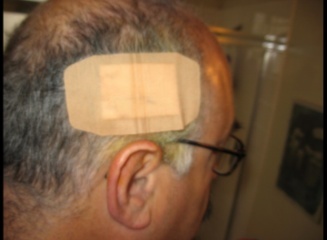 The
association of Parkinson's Disease and head trauma was 1.57 (1.35-1.83), meaning
that head trauma causing concussion makes Parkinson's Disease more than one
and half times more likely. So although head trauma makes Parkinson's Disease
more likely it is not inevitable. Further analysis of the results might have
shown that very severe head injury or certain types of head injury were largely
responsible for the increased likelihood of Parkinson's Disease following head
trauma.
For a printable version of this article
click here. In order to
refer to this article on its own
click here. The
association of Parkinson's Disease and head trauma was 1.57 (1.35-1.83), meaning
that head trauma causing concussion makes Parkinson's Disease more than one
and half times more likely. So although head trauma makes Parkinson's Disease
more likely it is not inevitable. Further analysis of the results might have
shown that very severe head injury or certain types of head injury were largely
responsible for the increased likelihood of Parkinson's Disease following head
trauma.
For a printable version of this article
click here. In order to
refer to this article on its own
click here.
26th April
2013 - New book
HANDBOOK OF PARKINSON'S DISEASE (Fifth edition)
Rajesh Pahwaa (Editor), Kelly E. Lyons
(Editor)
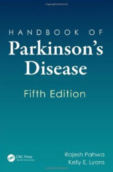 Publisher's
description : This volume has long prevailed as one of the leading
resources on Parkinson's disease. Fully updated with practical chapters on
pathology, neurochemistry, etiology, and breakthrough research, it spans every
essential topic related to the identification, assessment, and treatment of PD.
Reflecting the many advances that have taken place in the management of PD, this
volume promotes a multidisciplinary approach to care and supplies new sections
on the latest pharmacologic, surgical, and rehabilitative therapies, as well as
essential diagnostic, imaging, and nonmotor management strategies. New to this
edition : Early identification of premotor symptoms, Potential disease
modification agents, Physical and occupational therapy
Click here for more details. For
more books concerning Parkinson's Disease go to
Parkinson's Disease Books. Publisher's
description : This volume has long prevailed as one of the leading
resources on Parkinson's disease. Fully updated with practical chapters on
pathology, neurochemistry, etiology, and breakthrough research, it spans every
essential topic related to the identification, assessment, and treatment of PD.
Reflecting the many advances that have taken place in the management of PD, this
volume promotes a multidisciplinary approach to care and supplies new sections
on the latest pharmacologic, surgical, and rehabilitative therapies, as well as
essential diagnostic, imaging, and nonmotor management strategies. New to this
edition : Early identification of premotor symptoms, Potential disease
modification agents, Physical and occupational therapy
Click here for more details. For
more books concerning Parkinson's Disease go to
Parkinson's Disease Books.
20th April 2013 - News release
NEURTURIN FAILS CLINICAL TRIALS FOR PARKINSON'S DISEASE
Neurturin has failed to demonstrate any
effect in Parkinson's Disease. Neurturin is administered using
CERE-120, which is composed of a harmless adeno-associated virus (AAV) vector,
which carries the gene for neurturin. Neurturin, which is naturally
occurring, is known to repair damaged and dopamine-secreting neurons by
restoring their function. Neurturin is a member of the same protein family as
GDNF. CERE-120 is delivered by injection in to the brain.
CERE-120 is produced by Ceregene Inc.
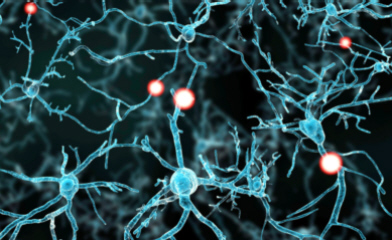 The
clinical trial did not demonstrate statistically significant efficacy. Yet,
following surgery, there was a marked placebo effect in those people being
tested and even those not being tested, as there often is after surgical trials.
The clinical trial was supported by the Michael J.Fox Foundation. The results
suggest that it is unclear if Ceregene will move forward with the development of
CERE-120 as a viable treatment for people with Parkinson�s Disease.
For more information go to the
News
release. For a printable version of this article
click here. In order to refer to this
article on its own
click here. The
clinical trial did not demonstrate statistically significant efficacy. Yet,
following surgery, there was a marked placebo effect in those people being
tested and even those not being tested, as there often is after surgical trials.
The clinical trial was supported by the Michael J.Fox Foundation. The results
suggest that it is unclear if Ceregene will move forward with the development of
CERE-120 as a viable treatment for people with Parkinson�s Disease.
For more information go to the
News
release. For a printable version of this article
click here. In order to refer to this
article on its own
click here.
18th April
2013 - New research
BRAIN CELL LOSS IN PARKINSON'S DISEASE
JAMA Neurology [2013] 70 (2) : 241-247 (D.A.Ziegler, J.S.Wonderlick, P.Ashourian,
L.A.Hansen, J.C.Young, A.J. Murphy, C.K.Koppuzha, J.H.Growdon, S.Corkin)
Complete abstract
 For
many years it has been widely claimed that, in Parkinson's Disease, there is a
huge loss of the dopaminergic neurons (the brain cells that produce dopamine).
It is often claimed that this cell loss is the primary cause of Parkinson's
Disease. However, not a single study had ever actually shown that there was
massive cell loss in Parkinson's Disease. It has also been assumed that loss of
the dopaminergic neurons that can cause Parkinson's Disease precedes the loss of
cholinergic neurons, which can lead to dementia, as is common in later
Parkinson's Disease. However, the results of a study assessing this theory did
not support what had often been claimed. For
many years it has been widely claimed that, in Parkinson's Disease, there is a
huge loss of the dopaminergic neurons (the brain cells that produce dopamine).
It is often claimed that this cell loss is the primary cause of Parkinson's
Disease. However, not a single study had ever actually shown that there was
massive cell loss in Parkinson's Disease. It has also been assumed that loss of
the dopaminergic neurons that can cause Parkinson's Disease precedes the loss of
cholinergic neurons, which can lead to dementia, as is common in later
Parkinson's Disease. However, the results of a study assessing this theory did
not support what had often been claimed.
Researchers assessed the volume of the brain in the area in which dopaminergic
neurons are common. They found that the volume of the brain in this area was
decreased in people with mild Parkinson's Disease but not in people that did not
have Parkinson's Disease. However, in more severe Parkinson's Disease there was
no greater loss of volume of the brain in the area affected by Parkinson's
Disease as there would have been if the severity of Parkinson's Disease was due
to cell loss.
Research has
always instead been
consistent with a major reduction in cell activity rather than an actual loss of
the cells involved in Parkinson's Disease. For a printable version of this article
click here.
In order to refer to this
article on its own
click here.
16th April 2013 - New book
DEFYING DEMENTIA
Kevin Davies
 Publishers
description : As we get older there are few things more frighteningg than
forgetting someone's name or where you left your house keys. For millions of
us the first few times this happens we fear we're experiencing the onset of
dementia. Recognizing the symptoms can lead to an early diagnosis which can
mean better treatment options, a longer, better life and a change to take
steps to slow or reduce the symptoms of dementia. There are many drugs and
treatments the patient needs to retrain parts of their brain that have been
damaged. You can DEFY it by learning the symptoms, getting diagnosed early,
and getting treatment quickly. Ten minutes is all that stands between you
and knowing if your lapse of memory is fatigue, a vitamin B deficiency, some
other curable disease, or depression.
Click here for more details Publishers
description : As we get older there are few things more frighteningg than
forgetting someone's name or where you left your house keys. For millions of
us the first few times this happens we fear we're experiencing the onset of
dementia. Recognizing the symptoms can lead to an early diagnosis which can
mean better treatment options, a longer, better life and a change to take
steps to slow or reduce the symptoms of dementia. There are many drugs and
treatments the patient needs to retrain parts of their brain that have been
damaged. You can DEFY it by learning the symptoms, getting diagnosed early,
and getting treatment quickly. Ten minutes is all that stands between you
and knowing if your lapse of memory is fatigue, a vitamin B deficiency, some
other curable disease, or depression.
Click here for more details
13th April 2013 - New review
TECHNOLOGICAL DEVICES FOR PARKINSON'S
DISEASE (Part 1)
In recent years technological devices have started
being used to try to improve or iad people with Parkinson's Disease without
the necessity for drugs or surgery : |
| |
|
LASER DEVICES, including laser lights attached to canes, handheld devices or
the Parkinson walkers. They display a beam of light on the ground, providing
a target to step over to help overcome freezing episodes. For more
information go to
Laser cane
and
Laser Walker.
|
|
|
FUNCTIONAL ELECTRICAL STIMULATION is the use of electrical impulses to
stimulate weak or paralysed muscles. For more information go to
Functional electrical stimulation.
|
|
|
FOCUSED ULTRASOUND uses multiple intersecting beams of ultrasound energy are
focused with a high degree of precision and accuracy on the target. For more
information go to
Focused
Ultrasound.
|
|
|
|
MAGNETIC THERAPY involves the use of an extremely low-level electromagnetic
field applied by a specially designed device, the Magnesphere. Helmholtz
coils immerse the entire patient in a low strength electromagnetic field.
For more information go to
Magnetic
therapy. |
For a printable version of this article
click here.
For more news go to
Parkinson's Disease News.
12th April 2013 - New web site
THE PARKINSON HUB
 The parkinsonhub
is a recent Parkinson's Disease web site that aims to provide patients, carers
and healthcare professionals with the latest news, link and information in the
area of Parkinson�s disease. For more information,
go to
theparkinsonhub. They have just
introduced tthe complementary PD Quality of Life interactive resource,
which enables people with Parkinson's Disease to identify and understand areas
in their lives most affected by Parkinson's Disease. For more
information go to
pdqualityoflife. The parkinsonhub
is a recent Parkinson's Disease web site that aims to provide patients, carers
and healthcare professionals with the latest news, link and information in the
area of Parkinson�s disease. For more information,
go to
theparkinsonhub. They have just
introduced tthe complementary PD Quality of Life interactive resource,
which enables people with Parkinson's Disease to identify and understand areas
in their lives most affected by Parkinson's Disease. For more
information go to
pdqualityoflife.
6th April 2013 - New research
ISTRADEFYLLINE CLINICAL TRIAL RESULTS FORR PARKINSON'S DISEASE
Movement Disorders [2013] Mar 11 [Epub ahead of print] (Y.Mizuno, T.Kondo, the
Japanese Istradefylline Study Group.
Complete abstract
Researchers evaluated the efficacy and safety of istradefylline, which is being
developed for the treatment of Parkinson's Disease. Istradefylline is an A(2A)
adenosine receptor antagonist and so does not act by directly increasing the
activity of dopamine. It is administered with L-dopa.
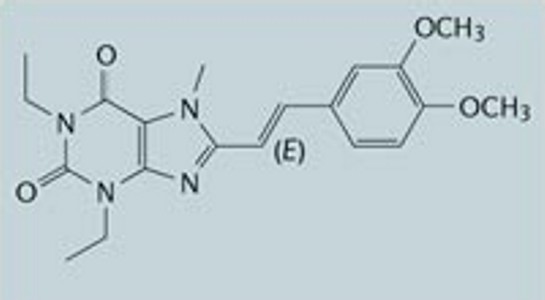 After
a 12 week clinical trial using 20mg or 40mg istradefylline the change in
daily OFF time was significantly reduced with 20mg per day and 40 mg per day.
The daily OFF time was over 40 minutes less. However, the most common
adverse event was dyskinesia, which occurred more commonly when taking
istradefylline than when taking a placebo.
For a printable version of this articlee
click here.
In order to refer to this article on its own
click here. After
a 12 week clinical trial using 20mg or 40mg istradefylline the change in
daily OFF time was significantly reduced with 20mg per day and 40 mg per day.
The daily OFF time was over 40 minutes less. However, the most common
adverse event was dyskinesia, which occurred more commonly when taking
istradefylline than when taking a placebo.
For a printable version of this articlee
click here.
In order to refer to this article on its own
click here.
5th April
2013 - New book
AVOID 1-CLICK SHOPPING IF YOU HAVE PARKINSON'S
C. Michael Beetner
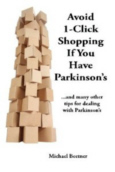 Publisher's
description : Being diagnosed with Parkinson�s disease is always a very scary
experience. What patients need is a guide that explains, in simple terms, what
to expect and how to deal with the disease. The author, who was diagnosed in
1994, quickly became an advocate and worker in the Central Ohio Parkinson�s
Society (COPS). COPS has always had a monthly newsletter giving him an
opportunity to write monthly on the various aspects of the disease. This book is
a compilation of the best columns over many years. All are written with a dry
(and often off-beat) sense of humor. There are chapters on his deep brain
surgery for Parkinson�s, and everything else from
loosing the right to drive and Sex vs. PD.
Click here for more details. For
more books concerning Parkinson's Disease go to
Parkinson's Disease Books. Publisher's
description : Being diagnosed with Parkinson�s disease is always a very scary
experience. What patients need is a guide that explains, in simple terms, what
to expect and how to deal with the disease. The author, who was diagnosed in
1994, quickly became an advocate and worker in the Central Ohio Parkinson�s
Society (COPS). COPS has always had a monthly newsletter giving him an
opportunity to write monthly on the various aspects of the disease. This book is
a compilation of the best columns over many years. All are written with a dry
(and often off-beat) sense of humor. There are chapters on his deep brain
surgery for Parkinson�s, and everything else from
loosing the right to drive and Sex vs. PD.
Click here for more details. For
more books concerning Parkinson's Disease go to
Parkinson's Disease Books.
1st April 2013 - New research
INHALED DOPAMINE AGONIST CLINICAL TRIAL RESULTS
Acta Neurologica Scandinavica [2013] Mar 26 [Epub ahead of print] (K.A.Grosset,
N.Malek, F.Morgan, D.G. Grosset)
Complete abstract
Researchers assessed the safety, tolerability and efficacy of a new form of apomorphine presently being developed, called VR040, which is an inhaled dry
powder. Apomorphine is a dopamine agonist used in the treatment of Parkinson's
Disease. 'Off' periods usually increase as Parkinson's Disease progresses and
the benefits of standard therapy wane. Subcutaneous (injected) apomorphine
rescues 'off' periods, but injections by patients and adverse effects are
sometimes problematic. For more information go to
Apomorphine.
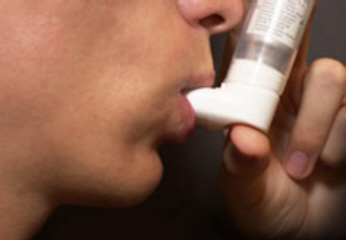 Inhaled
doses
were gradually increased until efficacy was reached and given to patients when
they were in an 'off' state. When it was inhaled, apomorphine was rapidly
absorbed, within 2 to 7 minutes. This enabled a reversal from the 'off' state,
in just 10 minutes. In contrast many people with Parkinson's Disease have to
wait 30 to 60 minutes for their Parkinson's Disease drugs to have effect.
Therefore, speed of effect appears to be its greatest benefit. Adverse effects
did not differ between those taking inhaled apomorphine and those taking a
placebo.
For a printable version of this article
click here.
In order to refer to this article on its own
click here. Inhaled
doses
were gradually increased until efficacy was reached and given to patients when
they were in an 'off' state. When it was inhaled, apomorphine was rapidly
absorbed, within 2 to 7 minutes. This enabled a reversal from the 'off' state,
in just 10 minutes. In contrast many people with Parkinson's Disease have to
wait 30 to 60 minutes for their Parkinson's Disease drugs to have effect.
Therefore, speed of effect appears to be its greatest benefit. Adverse effects
did not differ between those taking inhaled apomorphine and those taking a
placebo.
For a printable version of this article
click here.
In order to refer to this article on its own
click here.
|
.gif)
.gif)
 The
association of Parkinson's Disease and head trauma was 1.57 (1.35-1.83), meaning
that head trauma causing concussion makes Parkinson's Disease more than one
and half times more likely. So although head trauma makes Parkinson's Disease
more likely it is not inevitable. Further analysis of the results might have
shown that very severe head injury or certain types of head injury were largely
responsible for the increased likelihood of Parkinson's Disease following head
trauma.
For a printable version of this article
The
association of Parkinson's Disease and head trauma was 1.57 (1.35-1.83), meaning
that head trauma causing concussion makes Parkinson's Disease more than one
and half times more likely. So although head trauma makes Parkinson's Disease
more likely it is not inevitable. Further analysis of the results might have
shown that very severe head injury or certain types of head injury were largely
responsible for the increased likelihood of Parkinson's Disease following head
trauma.
For a printable version of this article
 Publisher's
description : This volume has long prevailed as one of the leading
resources on Parkinson's disease. Fully updated with practical chapters on
pathology, neurochemistry, etiology, and breakthrough research, it spans every
essential topic related to the identification, assessment, and treatment of PD.
Reflecting the many advances that have taken place in the management of PD, this
volume promotes a multidisciplinary approach to care and supplies new sections
on the latest pharmacologic, surgical, and rehabilitative therapies, as well as
essential diagnostic, imaging, and nonmotor management strategies. New to this
edition : Early identification of premotor symptoms, Potential disease
modification agents, Physical and occupational therapy
Publisher's
description : This volume has long prevailed as one of the leading
resources on Parkinson's disease. Fully updated with practical chapters on
pathology, neurochemistry, etiology, and breakthrough research, it spans every
essential topic related to the identification, assessment, and treatment of PD.
Reflecting the many advances that have taken place in the management of PD, this
volume promotes a multidisciplinary approach to care and supplies new sections
on the latest pharmacologic, surgical, and rehabilitative therapies, as well as
essential diagnostic, imaging, and nonmotor management strategies. New to this
edition : Early identification of premotor symptoms, Potential disease
modification agents, Physical and occupational therapy
 The
clinical trial did not demonstrate statistically significant efficacy. Yet,
following surgery, there was a marked placebo effect in those people being
tested and even those not being tested, as there often is after surgical trials.
The clinical trial was supported by the Michael J.Fox Foundation. The results
suggest that it is unclear if Ceregene will move forward with the development of
CERE-120 as a viable treatment for people with Parkinson�s Disease.
For more information go to the
The
clinical trial did not demonstrate statistically significant efficacy. Yet,
following surgery, there was a marked placebo effect in those people being
tested and even those not being tested, as there often is after surgical trials.
The clinical trial was supported by the Michael J.Fox Foundation. The results
suggest that it is unclear if Ceregene will move forward with the development of
CERE-120 as a viable treatment for people with Parkinson�s Disease.
For more information go to the
 For
many years it has been widely claimed that, in Parkinson's Disease, there is a
huge loss of the dopaminergic neurons (the brain cells that produce dopamine).
It is often claimed that this cell loss is the primary cause of Parkinson's
Disease. However, not a single study had ever actually shown that there was
massive cell loss in Parkinson's Disease. It has also been assumed that loss of
the dopaminergic neurons that can cause Parkinson's Disease precedes the loss of
cholinergic neurons, which can lead to dementia, as is common in later
Parkinson's Disease. However, the results of a study assessing this theory did
not support what had often been claimed.
For
many years it has been widely claimed that, in Parkinson's Disease, there is a
huge loss of the dopaminergic neurons (the brain cells that produce dopamine).
It is often claimed that this cell loss is the primary cause of Parkinson's
Disease. However, not a single study had ever actually shown that there was
massive cell loss in Parkinson's Disease. It has also been assumed that loss of
the dopaminergic neurons that can cause Parkinson's Disease precedes the loss of
cholinergic neurons, which can lead to dementia, as is common in later
Parkinson's Disease. However, the results of a study assessing this theory did
not support what had often been claimed. Publishers
description : As we get older there are few things more frighteningg than
forgetting someone's name or where you left your house keys. For millions of
us the first few times this happens we fear we're experiencing the onset of
dementia. Recognizing the symptoms can lead to an early diagnosis which can
mean better treatment options, a longer, better life and a change to take
steps to slow or reduce the symptoms of dementia. There are many drugs and
treatments the patient needs to retrain parts of their brain that have been
damaged. You can DEFY it by learning the symptoms, getting diagnosed early,
and getting treatment quickly. Ten minutes is all that stands between you
and knowing if your lapse of memory is fatigue, a vitamin B deficiency, some
other curable disease, or depression.
Publishers
description : As we get older there are few things more frighteningg than
forgetting someone's name or where you left your house keys. For millions of
us the first few times this happens we fear we're experiencing the onset of
dementia. Recognizing the symptoms can lead to an early diagnosis which can
mean better treatment options, a longer, better life and a change to take
steps to slow or reduce the symptoms of dementia. There are many drugs and
treatments the patient needs to retrain parts of their brain that have been
damaged. You can DEFY it by learning the symptoms, getting diagnosed early,
and getting treatment quickly. Ten minutes is all that stands between you
and knowing if your lapse of memory is fatigue, a vitamin B deficiency, some
other curable disease, or depression.
 The parkinsonhub
is a recent Parkinson's Disease web site that aims to provide patients, carers
and healthcare professionals with the latest news, link and information in the
area of Parkinson�s disease. For more information,
go to
The parkinsonhub
is a recent Parkinson's Disease web site that aims to provide patients, carers
and healthcare professionals with the latest news, link and information in the
area of Parkinson�s disease. For more information,
go to
 After
a 12 week clinical trial using 20mg or 40mg istradefylline the change in
daily OFF time was significantly reduced with 20mg per day and 40 mg per day.
The daily OFF time was over 40 minutes less. However, the most common
adverse event was dyskinesia, which occurred more commonly when taking
istradefylline than when taking a placebo.
For a printable version of this articlee
After
a 12 week clinical trial using 20mg or 40mg istradefylline the change in
daily OFF time was significantly reduced with 20mg per day and 40 mg per day.
The daily OFF time was over 40 minutes less. However, the most common
adverse event was dyskinesia, which occurred more commonly when taking
istradefylline than when taking a placebo.
For a printable version of this articlee
 Publisher's
description : Being diagnosed with Parkinson�s disease is always a very scary
experience. What patients need is a guide that explains, in simple terms, what
to expect and how to deal with the disease. The author, who was diagnosed in
1994, quickly became an advocate and worker in the Central Ohio Parkinson�s
Society (COPS). COPS has always had a monthly newsletter giving him an
opportunity to write monthly on the various aspects of the disease. This book is
a compilation of the best columns over many years. All are written with a dry
(and often off-beat) sense of humor. There are chapters on his deep brain
surgery for Parkinson�s, and everything else from
loosing the right to drive and Sex vs. PD.
Publisher's
description : Being diagnosed with Parkinson�s disease is always a very scary
experience. What patients need is a guide that explains, in simple terms, what
to expect and how to deal with the disease. The author, who was diagnosed in
1994, quickly became an advocate and worker in the Central Ohio Parkinson�s
Society (COPS). COPS has always had a monthly newsletter giving him an
opportunity to write monthly on the various aspects of the disease. This book is
a compilation of the best columns over many years. All are written with a dry
(and often off-beat) sense of humor. There are chapters on his deep brain
surgery for Parkinson�s, and everything else from
loosing the right to drive and Sex vs. PD.
 Inhaled
doses
were gradually increased until efficacy was reached and given to patients when
they were in an 'off' state. When it was inhaled, apomorphine was rapidly
absorbed, within 2 to 7 minutes. This enabled a reversal from the 'off' state,
in just 10 minutes. In contrast many people with Parkinson's Disease have to
wait 30 to 60 minutes for their Parkinson's Disease drugs to have effect.
Therefore, speed of effect appears to be its greatest benefit. Adverse effects
did not differ between those taking inhaled apomorphine and those taking a
placebo.
For a printable version of this article
Inhaled
doses
were gradually increased until efficacy was reached and given to patients when
they were in an 'off' state. When it was inhaled, apomorphine was rapidly
absorbed, within 2 to 7 minutes. This enabled a reversal from the 'off' state,
in just 10 minutes. In contrast many people with Parkinson's Disease have to
wait 30 to 60 minutes for their Parkinson's Disease drugs to have effect.
Therefore, speed of effect appears to be its greatest benefit. Adverse effects
did not differ between those taking inhaled apomorphine and those taking a
placebo.
For a printable version of this article